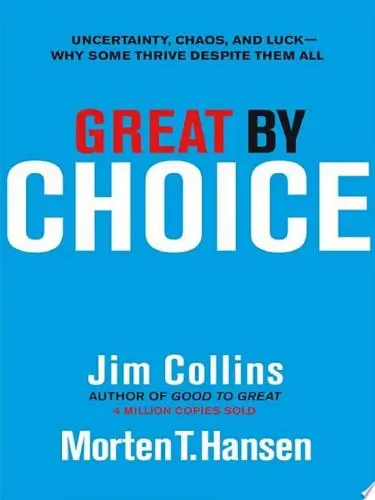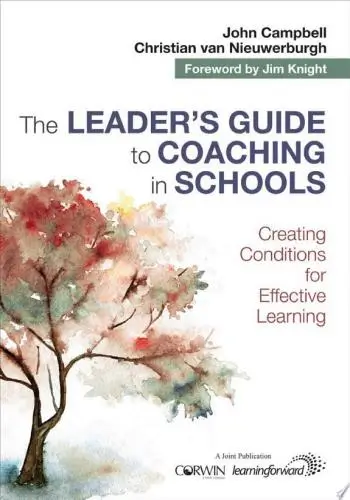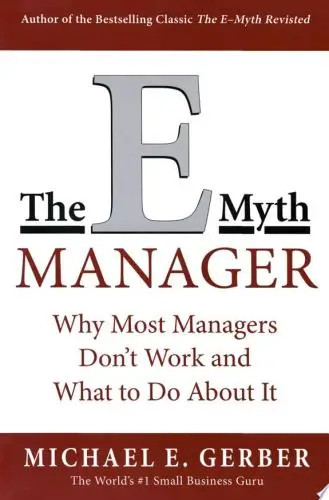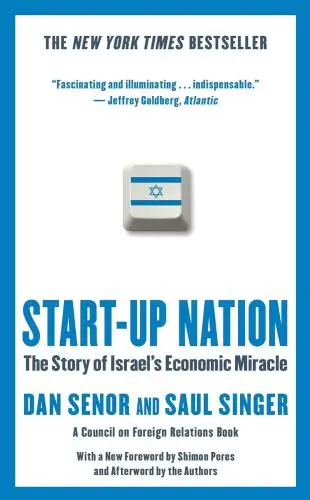
Good to Great
Why Some Companies Make the Leap and Others Don't
What's it about?
Good to Great by Jim Collins is a captivating guide that unravels the secrets behind transforming good companies into exceptional ones. Collins analyzes a plethora of successful businesses, identifying key factors that differentiate them from the rest. By emphasizing disciplined leadership, a culture of excellence, and strategic focus, Collins challenges conventional wisdom and provides practical tools for achieving greatness. This thought-provoking read is a roadmap for any aspiring organization seeking to transcend mediocrity and reach unprecedented levels of success.
About the Author
Jim Collins is a renowned author and management guru whose works have become a beacon of inspiration for business enthusiasts worldwide. With his crisp and insightful writing style, Collins delves deep into the realms of leadership, strategy, and organizational excellence. His groundbreaking book "Good to Great" is a masterpiece that unravels the secrets of transforming good companies into extraordinary ones, backed by extensive research and captivating storytelling. Collins takes readers on a voyage through the triumphs and failures of various corporations, offering profound perspectives on humility, discipline, and unwavering commitment. In "Built to Last," he explores the enduring qualities that define visionary companies, igniting a spark of inspiration within readers to cultivate greatness. Collins' unique approach combines rigorous analysis with real-world anecdotes, empowering leaders to navigate the complexities of business with unwavering determination. His works resonate with a wide audience, provoking profound introspection and encouraging readers to strive for excellence in all aspects of life. Whether you're a seasoned CEO or an aspiring entrepreneur, Jim Collins' books are a treasure trove of wisdom that will propel you towards achieving greatness.
5 Key Ideas of Good to Great
First Who, Then What
Greatness begins with getting the right people on the bus before deciding where to drive it.
Imagine building a championship sports team: you wouldn't start with a game plan; you'd start by recruiting the best players first.
- Right people onboard: Their passion fuels the team and aligns with goals, even before specifics are set.
- Flexibility in strategy: Adapt to changes more easily when you have the right people for shifting sands.
- Reduce management woes: Motivated individuals require less oversight, allowing leaders to focus on vision.
Evaluate your personal or professional circle and identify one 'seat' that needs filling with the right person.
Avoid focusing solely on qualifications and skills; prioritize character and values alignment instead.
Confront the Brutal Facts
Embrace the truth and address reality, however uncomfortable, to maintain effective progress.
Think of the thermostat in your home: without accurately reading the temperature, it can't effectively regulate climate.
- Encourages open dialogue: When teams address reality, morale improves as opinions are valued.
- Prevents surprises: Recognizing issues early on helps in devising timely solutions.
- Builds trust: Transparency fosters trust within teams and organizations.
Host a 'truth session' for your team or personal life, inviting honest feedback on pressing issues.
Beware of sugarcoating problems; it shortchanges potential solutions and stunts true progress.
The Hedgehog Concept
Focus on a simple, clear concept derived from the intersection of passion, skill, and economics.
Picture the hedgehog: rather than overcomplicating, it rolls into a ball, its simplest line of defense, and succeeds.
- Clarity aligns efforts: Defined focus areas reduce distractions and wasted energy.
- Strength maximization: Operating within areas of expertise enhances effectiveness.
- Sustainable growth: Combining passion and expertise with economic viability ensures longevity.
Identify your intersecting three: what you love, what you’re best at, and what drives economic success. Focus efforts there.
Avoid getting caught in the excitement of diversification; simplicity often enhances mastery.
Deeper knowledge. Personal growth. Unlocked.
Unlock this book's key ideas and 15M+ more. Learn with quick, impactful summaries.
Read Full SummarySign up and read for free!
Good to Great Summary: Common Questions
Diving straight into the heart of what drives a company from the humdrum to the exceptional, Jim Collins' exploration is nothing short of a corporate odyssey. The book unpacks a simple yet powerful idea: disciplined people, thinking, and action can compound to transform good companies into great ones. It's well-researched and anchored in data, which makes it compelling for those who appreciate hard evidence over mere anecdotes. Collins avoids jargon, making the concepts accessible and the strategies applicable, even for those new to business literature.
On the flip side, while the book champions timeless strategies, some readers might find the examples a tad dated, given the rapid pace of change in the business world. Nonetheless, it stands as a beacon for business leaders and employees alike, offering a clear framework to aspire to greatness. The text serves as a mirror, encouraging introspection on organizational practices and leadership qualities. Its enduring popularity suggests it's hit home for many readers. A piece that continues to resonate in today's fast-evolving business landscape, this book lands a solid 4.3 on the scale of timeless business classics.
Experience Personalized Book Summaries, Today!
Discover a new way to gain knowledge, and save time.
Sign up for our 7-day trial now.
No Credit Card Needed

Similar Books

Emotional Intelligence at Work
Dalip Singh
Seeing the Big Picture
Kevin Cope
Leadership Is Concept Heavy
Dr. Enoch Antwi
Great by Choice
Jim Collins
The Leader′s Guide to Coaching in Schools
John Campbell
Preparing School Leaders for the 21st Century
Stephan Gerhard Huber
The E-Myth Manager
Michael E. Gerber
Leadership Is Language
L. David Marquet
Start-up Nation
Dan Senor
The Founder's Dilemmas
Noam WassermanTrending Summaries

Peak
Anders Ericsson
Never Split the Difference
Chris Voss
Smart Brevity
Jim VandeHei
The Psychology of Money
Morgan Housel
The First 90 Days
Michael D. Watkins
Atomic Habits
James Clear
Thinking, Fast and Slow
Daniel Kahneman
The Body Keeps the Score
Bessel van der Kolk M.D.
The Power of Regret
Daniel H. Pink
The Compound Effect
Darren HardyNew Books

The ^AOxford Handbook of Job Loss and Job Search
Ute-Christine Klehe PhD
Job Interviews For Dummies®
Joyce Lain Kennedy
Job Interviews In A Week
Alison Straw
Handbook of Career Development
Gideon Arulmani
The Art of Spending Money
Morgan Housel
$100M Offers
Alex Hormozi
A Candle for Kiri
Edna Mae Holm
Principles of Marketing, Global Edition
Gary Armstrong
Serpent Rising: The Kundalini Compendium
Neven Paar
